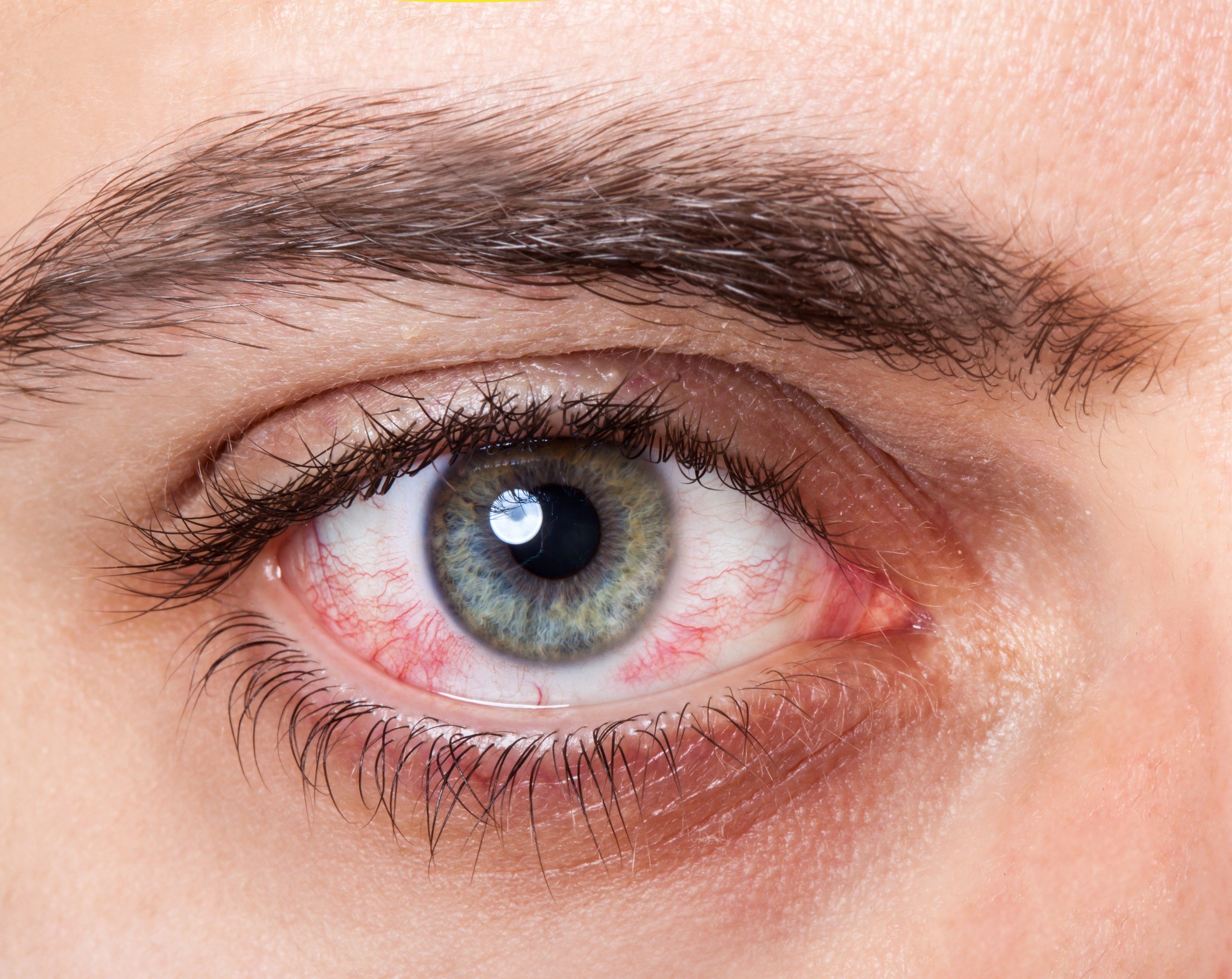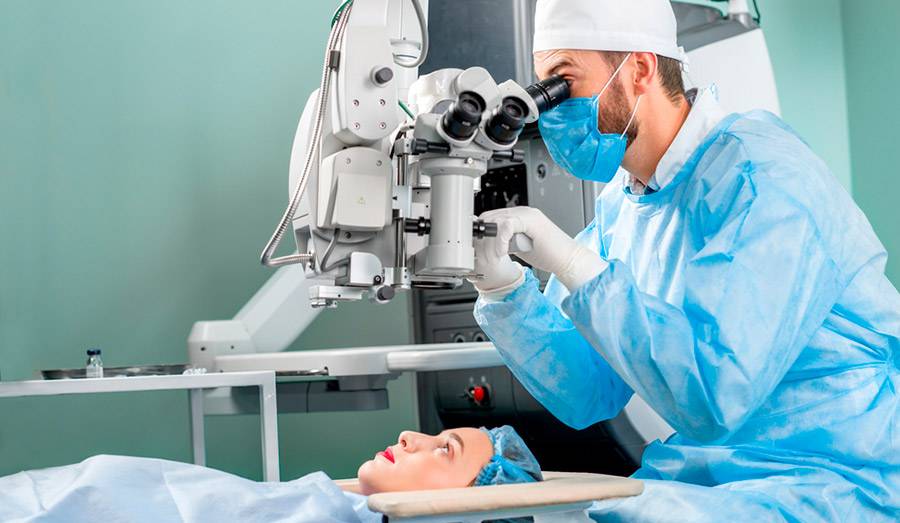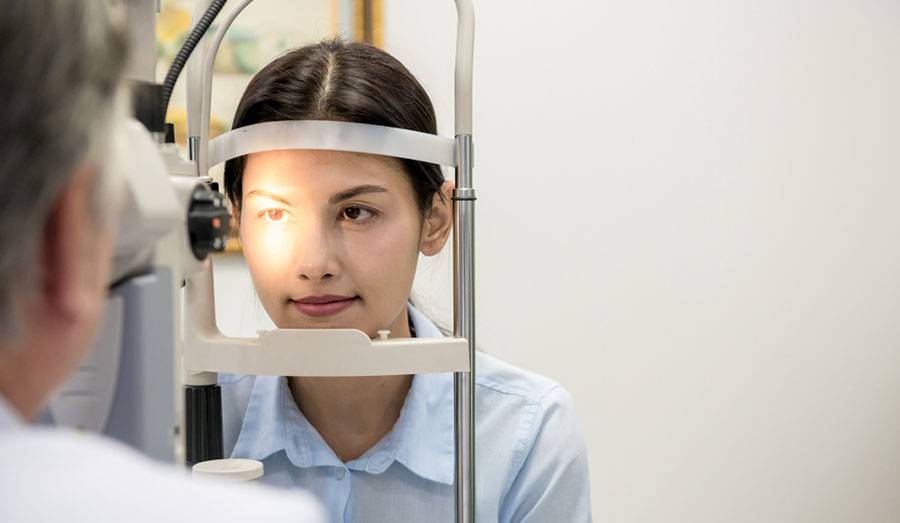Dry Eye Syndrome
Dry eye syndrome is a condition characterized by a decrease in the natural lubrication of the cornea and conjunctiva of the eyes. It occurs due to disruption of the lacrimal glands functioning, inflammatory or infectious processes. The tear film does not have time to regenerate or changes its composition. As a result, the cornea does not receive enough oxygen and nutrients.

Dry Eye Syndrome causes

There are several factors that lead to Dry Eye Syndrome development. They are not only pathologies of the organs of the visual system, but also many other conditions:
Hormonal disorders
A decrease in tear production may occur when the hormonal background changes. It occurs due to age-related changes, infectious diseases, or pathologies of internal organs.
Adverse environmental conditions
External factors such as poor ecology, working in hazardous industries, being in rooms with excessively dry air, or frequent flights, lead to a change of the tear film composition. The surface of the cornea dries out quickly, resulting in a feeling of ache in the eyes, and increased sensitivity.
Prolonged reading or work at a computer
When spending several hours at a computer or reading, a person blinks less and strains eyes. In this case, the stability of hydration of the cornea and conjunctiva is disturbed. Feelings of pain and burning appear.

Systemic diseases
Diseases of the joints, heart, blood vessels, gastrointestinal tract, or endocrine dysfunction lead to an inadequate response of the immune system. It is characterized by impaired tear secretion and the tear film instability.
Eye surgery
Dry eye syndrome often develops as a post-operative complication. That is why ophthalmologists recommend doing eye surgery (conjunctival cavity plastic surgery, keratoplasty, ptosis correction, laser correction) only in extreme cases.

Wearing of contact lenses
Dry Eye Syndrome can develop because of individual intolerance to the components of contact lens materials, because of an allergic reaction to contact lens solutions, or because of noncompliance with hand hygiene rules.
Nutrition
Changing of the regime and diet, drastic weight loss or weight gain and fast food eating can cause metabolic disorders. In the result symptoms of Dry Eye Syndrome may appear.
Medications
Dryness of the cornea can be the result of long-lasting medication therapy: antihistamines, oral contraceptives, and eye drops.
In most cases, Dry Eye Syndrome is caused by a combination of several factors. Therefore, in most cases combined forms of the disease are diagnosed. They are characterized by various degrees of severity and symptoms.
Dry Eye Syndrome symptoms and stages

Dry Eye Syndrome symptoms vary from mild to extremely severe. The severity of symptoms increases with complications. If at the mild stage only slight discomfort and eyes redness appear, at the most severe stage, visual impairment can occur.
Dry Eye Syndrome symptoms:
irritation;
itching;
redness;
foreign body sensation;
«sandy feeling» in the eyes;
eye fatigue;
lacrimation.
The above-mentioned symptoms are subjective and do not allow to diagnose DES definitely. It is also necessary to examine the presence of objective symptoms:
at the mild stage - increased tear production, height increase of the lower lacrimal meniscus;
at the moderate and moderate-severe stage – sticky eyes, dryness;
at the severe stage - corneal erosion, epithelial growths;
in extremely severe cases – problems with eyelid closure, corneal perforation.
Diagnostic tools for Dry Eye Syndrome

To get a full picture of a disease it is necessary to perform several tests:
Physical - condition of the skin on the eyelids, closure and blinking frequency are examined;
Biomicroscopy - analysis of the state of the cornea, conjunctiva, and lacrimal film;
Fluorescein instillation test - a solution of fluorescein is instilled into the conjunctival sac and then a lamp with a blue light is shined at the eye. Corneal defects and gaps on the tear film are not stained. By the number of defects, the stage of the pathological process can be determined.
Dry Eye Syndrome treatment

When Dry Eye Syndrome is diagnosed, the doctor prescribes treatment that is aimed not only at relieving the symptoms, but also at eliminating its causes.
Artificial tear substitutes show high effectiveness in Dry Eye Syndrome treatment. They are instilled into the conjunctival sac to restore the stability of the tear film. Artificial tear substitutes can be divided into 2 groups: with and without preservatives. Preservatives free artificial tear substitutes are non-toxic, compatible with contact lenses material and suitable for allergy prone people.
To prevent eyes dryness at different stages solutions with low, medium, or high viscosity are used. If the syndrome is mild, it is possible to use eye ointments and gels. At the middle stage, anti-inflammatory medications are used, at the severe stage, immunosuppressants are used. Neither eye drops, nor systemic drugs, should not be taken without a doctor's prescription.
Contact lenses or glasses with a humidifying chamber may be used as an additional way of treatment. They relieve symptoms, help to moisturize the cornea, and protect against adverse external factors. Also drinking plenty of water helps to improve the general condition.
Gylan moisturizing drops for Dry Eye Treatment
Gylan is moisturizing ophthalmic solution that contains 100% hyaluronic acid with concentrations of 0.18% and 0.3%. Hyaluronic acid is a natural ingredient that creates a protective safe moisturizing film on the eye surface and provides long-lasting moisturizing and comfort.
Gylan does not contain preservatives. It is available in 10 ml bottles and 0,4 ml dropper tubes.
Gylan relieves Dry Eye Syndrome symptoms, eliminates dryness, fatigue and eye irritation, restores the structure and properties of the tear film and stimulates the healing of the conjunctiva and cornea.